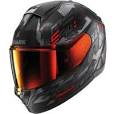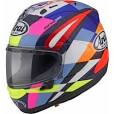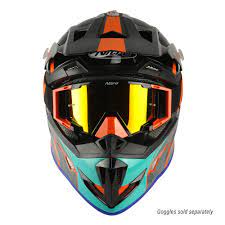Enhance Your Safety on the Road with Quality Motorcycle Wear

The Importance of Motorcycle Wear
Riding a motorcycle can be an exhilarating experience, but it also comes with certain risks. One of the most important aspects of motorcycle safety is wearing the appropriate gear. Motorcycle wear is not just about looking stylish; it plays a crucial role in protecting riders from potential injuries in case of accidents.
Helmet: The most essential piece of motorcycle wear is the helmet. Wearing a helmet can significantly reduce the risk of head injuries in the event of a crash. It is important to choose a helmet that meets safety standards and fits properly to ensure maximum protection.
Jacket: A durable motorcycle jacket provides protection against abrasions and impact injuries. Look for jackets made from high-quality materials such as leather or textile with built-in armor for added safety.
Gloves: Motorcycle gloves are essential for protecting your hands in case of a fall. They provide grip, reduce vibrations, and shield your hands from debris and weather elements.
Trousers: Riding trousers offer protection for your lower body against road rash and impact injuries. Choose trousers that fit well and provide adequate padding in critical areas like knees and hips.
Boots: Sturdy motorcycle boots are crucial for safeguarding your feet and ankles while riding. Look for boots with ankle support, non-slip soles, and reinforced toe and heel areas for optimal protection.
High-Visibility Gear: Wearing high-visibility clothing can enhance your visibility on the road, making it easier for other motorists to see you, especially in low-light conditions or adverse weather.
Remember, wearing the right motorcycle gear is not just about following regulations; it’s about prioritizing your safety on the road. Invest in quality gear that fits well, meets safety standards, and provides adequate protection to enjoy a safer and more enjoyable riding experience.
Essential Motorcycle Wear: Answers to Six Frequently Asked Questions
- What type of helmet should I wear for motorcycle riding?
- How do I choose the right size motorcycle jacket?
- What are the essential features to look for in motorcycle gloves?
- Why is it important to wear protective trousers while riding a motorcycle?
- What should I consider when selecting motorcycle boots for safety?
- Is high-visibility gear necessary when riding a motorcycle?
What type of helmet should I wear for motorcycle riding?
When it comes to motorcycle riding, choosing the right helmet is crucial for your safety on the road. The type of helmet you wear can make a significant difference in protecting your head in case of an accident. It is recommended to opt for a helmet that meets safety standards and fits properly. Full-face helmets provide the most comprehensive protection by covering your entire face and head, reducing the risk of injuries. Additionally, full-face helmets offer better wind and noise protection, making for a more comfortable riding experience. Remember, prioritising safety over style when selecting a helmet can ultimately save your life in the event of a crash.
How do I choose the right size motorcycle jacket?
When selecting the right size motorcycle jacket, it is crucial to prioritize both comfort and safety. Start by taking accurate measurements of your chest, waist, and arm length to determine your size according to the manufacturer’s sizing chart. Ensure that the jacket fits snugly but allows for freedom of movement, especially when reaching for the handlebars. Pay attention to the jacket’s sleeve length, ensuring they cover your wrists when in a riding position. Additionally, consider the type of riding you’ll be doing and whether you need extra room for layering underneath. Always try on different sizes and styles to find the perfect fit that offers both protection and comfort while on the road.
What are the essential features to look for in motorcycle gloves?
When considering motorcycle gloves, there are several essential features to look for to ensure both comfort and safety while riding. Firstly, it is important to choose gloves that provide adequate protection for your hands in case of a fall, including reinforced padding on the palms and knuckles. Additionally, look for gloves with a secure closure system to ensure a snug fit and prevent them from coming off during a ride. Breathability and weather resistance are also key factors to consider, as they can help regulate temperature and keep your hands dry in various riding conditions. Lastly, opt for gloves with touchscreen compatibility if you need to use electronic devices while riding without having to remove them. By prioritising these features in your choice of motorcycle gloves, you can ride confidently knowing that your hands are well-protected and comfortable.
Why is it important to wear protective trousers while riding a motorcycle?
Wearing protective trousers while riding a motorcycle is crucial for ensuring the safety and well-being of riders. Motorcycle trousers provide essential protection against abrasions, impact injuries, and road rash in the event of a crash or fall. The durable materials and reinforced padding in protective trousers help to minimize the severity of injuries to the lower body, including knees and hips. By wearing protective trousers, riders can significantly reduce the risk of serious harm and increase their chances of staying safe on the road. Prioritizing safety by wearing appropriate motorcycle gear, including protective trousers, is essential for every rider to enjoy a safer and more secure riding experience.
What should I consider when selecting motorcycle boots for safety?
When selecting motorcycle boots for safety, there are several factors to consider to ensure maximum protection on the road. Firstly, look for boots that provide adequate ankle support to prevent injuries in case of a fall or impact. Additionally, opt for boots with non-slip soles to maintain grip on the foot pegs and prevent accidents caused by slipping. Reinforced toe and heel areas are essential for protecting your feet from impact injuries, while waterproof or weather-resistant materials can keep your feet dry and comfortable in various riding conditions. Finally, choose boots that fit well and are comfortable for long rides to enhance both safety and riding experience.
Is high-visibility gear necessary when riding a motorcycle?
High-visibility gear is a crucial element of motorcycle wear, especially when it comes to enhancing rider safety on the road. While not mandatory by law in all regions, wearing high-visibility clothing significantly improves a rider’s visibility to other motorists, particularly in low-light conditions or adverse weather. The bright colours and reflective materials used in high-visibility gear help to make motorcyclists more conspicuous to drivers, reducing the risk of accidents caused by lack of visibility. Incorporating high-visibility gear into your riding attire can greatly increase your safety and overall peace of mind while out on the road.




